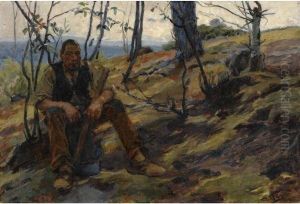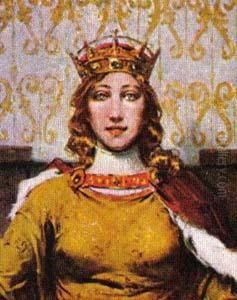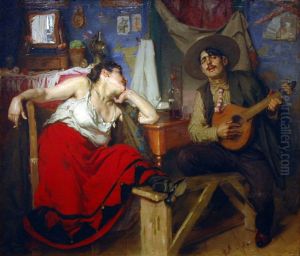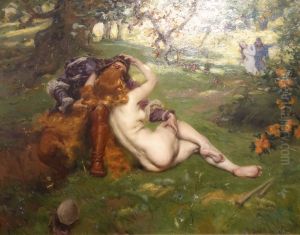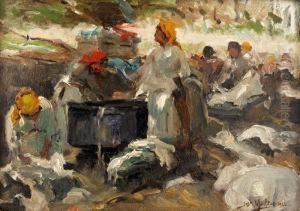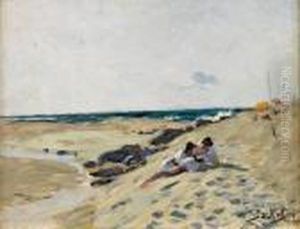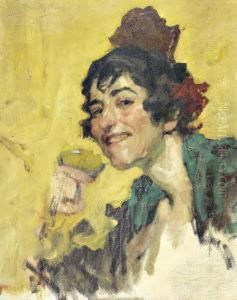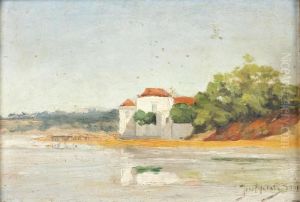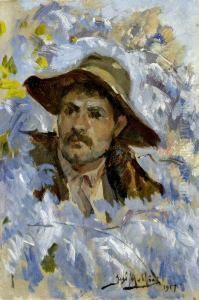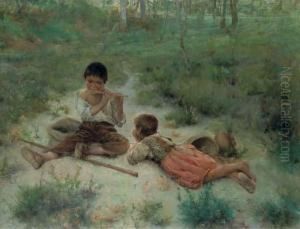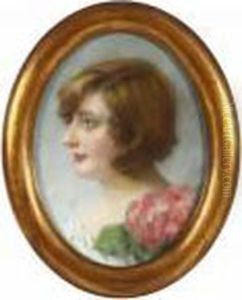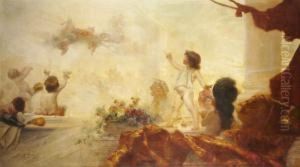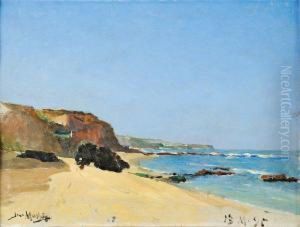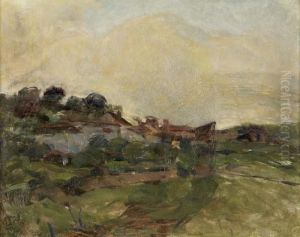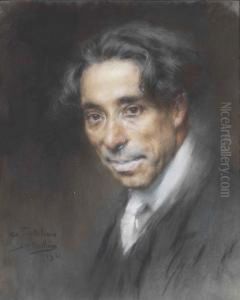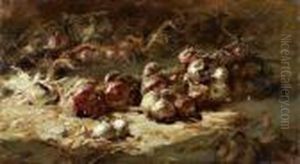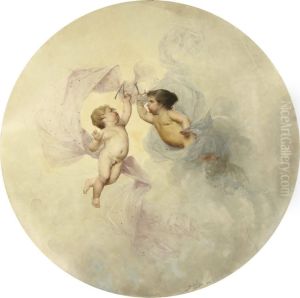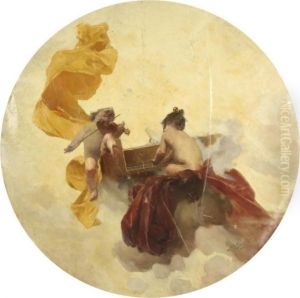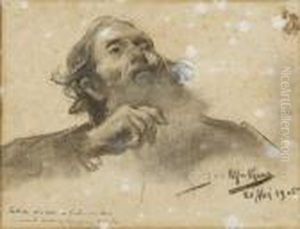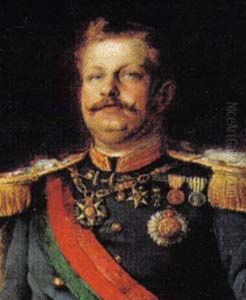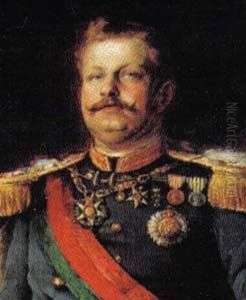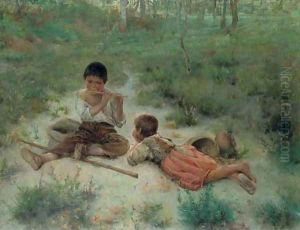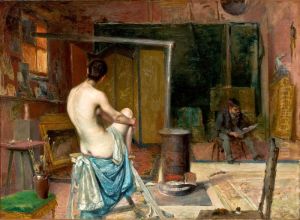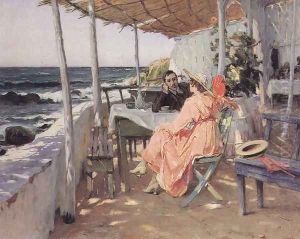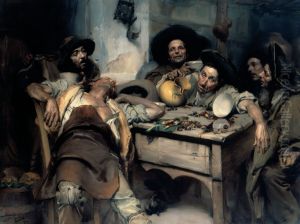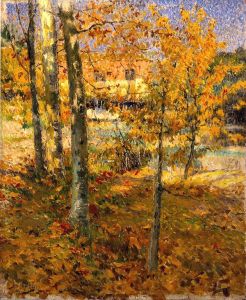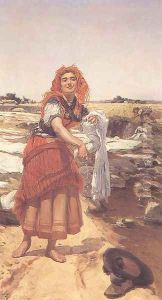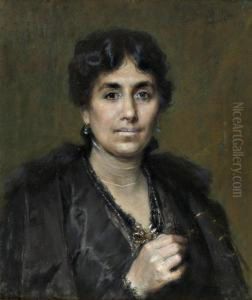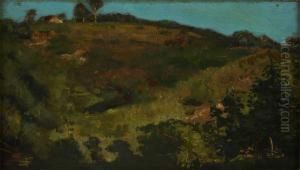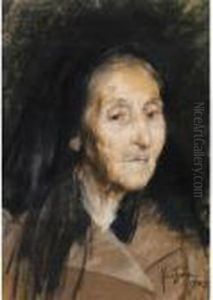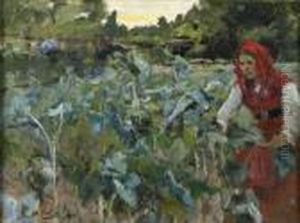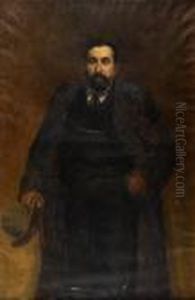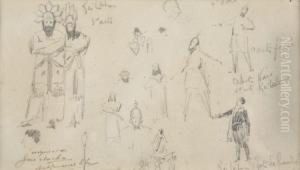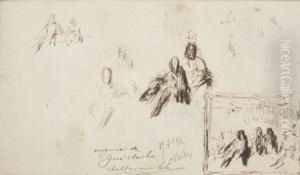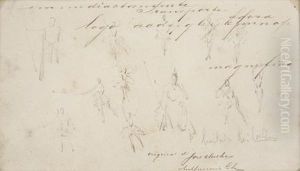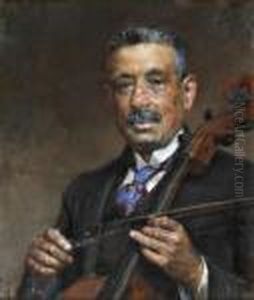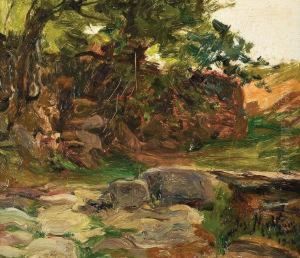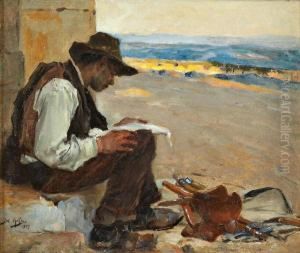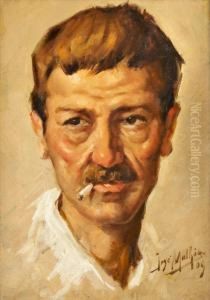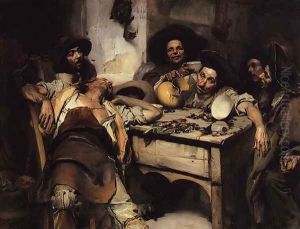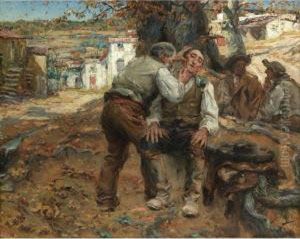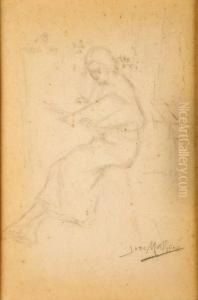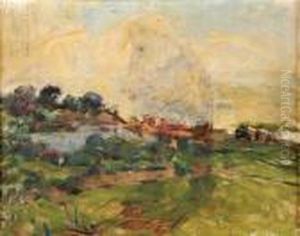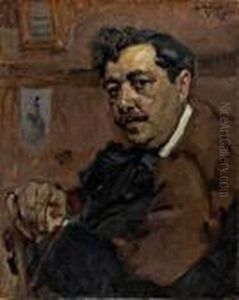Jose Malhoa Paintings
José Vital Branco Malhoa, known as José Malhoa, was a prominent Portuguese painter born on April 28, 1855, in Caldas da Rainha, Portugal. He is considered one of the leading names in Portuguese naturalist painting, with a career that spanned over six decades. Malhoa studied at the Academy of Fine Arts in Lisbon and was a student of the renowned artist Tomás da Anunciação. His early work was influenced by the Romantic movement, but he later became a key figure in the naturalist movement in Portugal, which emphasized the realistic depiction of everyday life and social issues.
Malhoa's work often depicted scenes of rural life in Portugal, showcasing the customs, people, and landscapes of his homeland. He was particularly known for his masterful use of light and shadow, which added a dramatic effect to his paintings. One of his most famous works is 'Os Bêbados' (The Drunkards), painted in 1907, which portrays the social problem of alcoholism in a compassionate and humanistic way.
Aside from his painting, Malhoa was also a respected teacher, having taught at the Society of Fine Arts in Lisbon. He played a crucial role in the evolution of the artistic scene in Portugal at the turn of the 20th century. Malhoa was the recipient of numerous awards and honors during his lifetime, and his works were exhibited in several international exhibitions.
José Malhoa died on October 26, 1933, in Figueiró dos Vinhos, leaving behind a legacy as one of Portugal's most celebrated artists. His house in Figueiró dos Vinhos is now a museum dedicated to his life and work, the José Malhoa Museum. His contributions to Portuguese art are remembered for their vivid portrayal of the nation's culture and for influencing subsequent generations of Portuguese artists.
